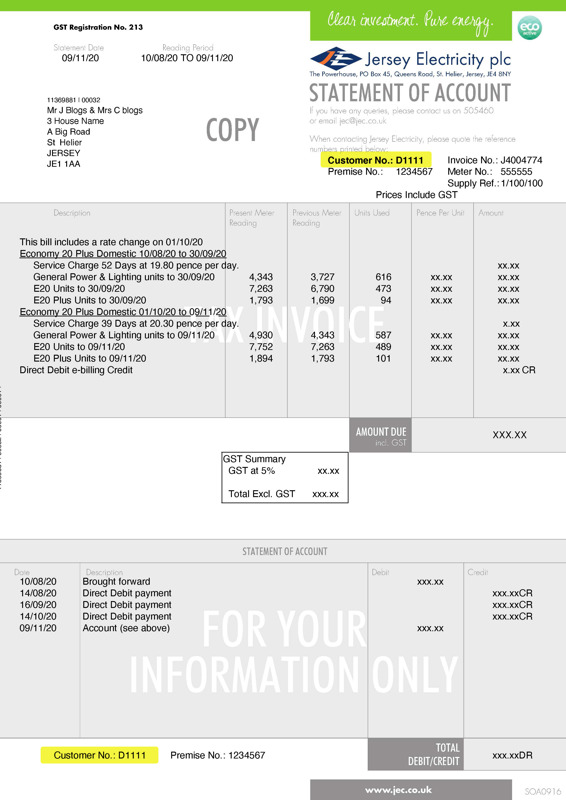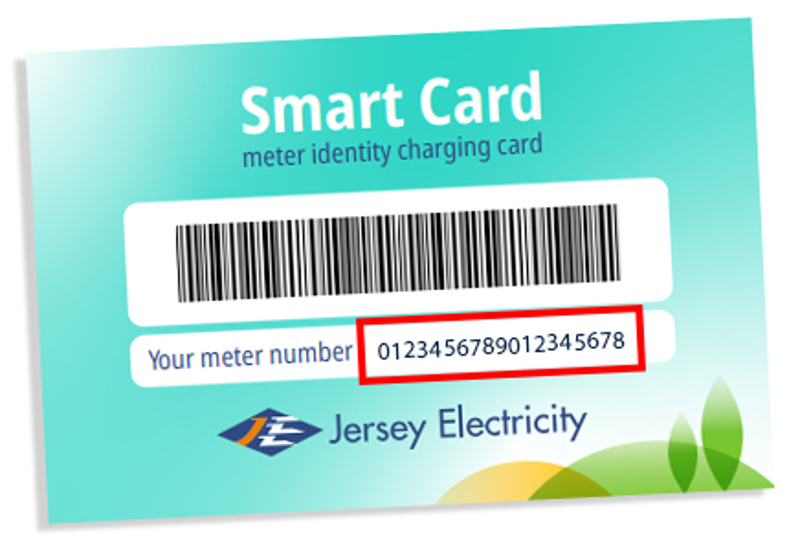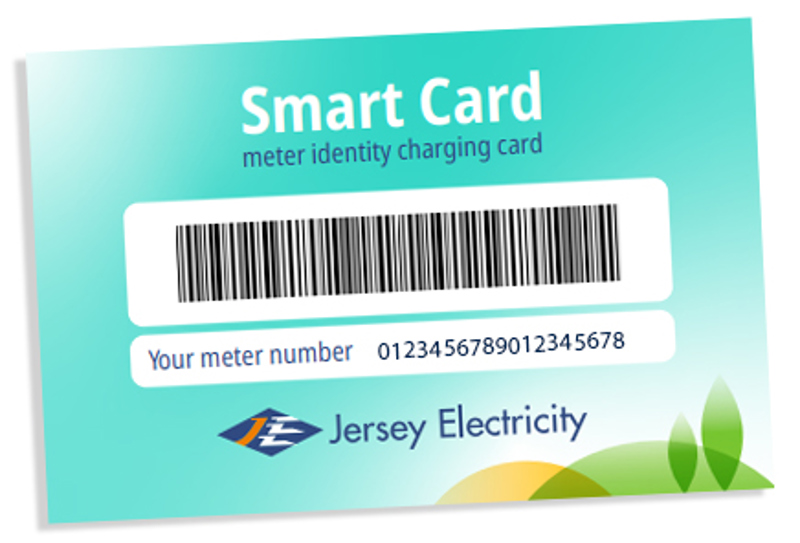
3. The Island is extremely well-positioned. JE’s low-carbon importation strategy has been the key driver of a one-third reduction in Jersey’s overall carbon emissions over the last 30 years, despite a 60% increase in electricity consumption. Jersey’s electricity is already now virtually completely decarbonised.
4. The only way Jersey will decarbonise further is to switch away from fossil fuels to electricity. The heating of our buildings and running of our vehicles are by far the biggest carbon emitters that need our immediate attention and urgent transformation.
5. One-third of the electricity we distribute is already certified renewable hydropower from France, and the remaining two-thirds come from low-carbon nuclear sources (with <5% from on-Island sources, primarily GoJ owned Energy-from-Waste facility).
6. Local renewables are very unlikely to lower overall carbon emissions because they are far more likely to displace imported electricity, which is already virtually completely decarbonised. JE is still investing in local ‘community’ renewables with a focus on reducing costs (as they are presently much more expensive than imported electricity).
7. Jersey’s low-carbon grid is largely ‘future proofed’ with spare capacity and could facilitate a carbon-neutral future faster and more cost-effectively than almost anywhere else. JE is willing to make any further investment necessary in the grid, and we believe this could be done without that investment driving up electricity prices. The grid will also play a crucial role in backing up and enabling more local renewables such as solar PV or offshore wind, which are intermittent.
8. JE is investing hugely in new technology such as EV charging, heat pumps, smart metering (including digital apps), smart home and big data, which will help energy efficiency, comfort and control. Hydrogen is unlikely to have a role in the short to medium term. Biofuels may have a limited role but are more expensive than electricity and come with their own environmental issues. Batteries are not cost-effective, and the grid is still needed in any case, effectively acting like a big, low-cost battery with the added benefit of spare capacity.
9. Jersey’s lowest-cost solution to its carbon challenge is to hugely improve our energy efficiency and then ‘electrify what’s left’, focusing on electric heating of buildings (especially heat pumps) and electrifying vehicles (alongside encouraging cycle lanes, personal e-mobility, shared and public e-transport).
10. Funding is needed for energy efficiency, e-transport and low-carbon solutions in homes and businesses (including help for the vulnerable), but technical solutions are already available and will in most cases pay back over the long term. ‘Stick and carrot’ (incentives and disincentives) and non-financial support are needed to help consumers make informed choices and change behaviours. For example, the polluter needs to pay the cost of carbon damage (at the moment, it is ‘free’ to pollute). Similarly, consumers need to see value from reducing carbon emissions.
[1] Scope 1 and 2 (excluding agriculture, waste and land use) and relying on offsetting for residual balances from 2030
Our 10-point perspective in summary: Does Jersey want to lead or follow?
How should we work together to become carbon neutral?
What should Jersey’s target date be for achieving it?
1. Striving for carbon neutrality is not only the right thing for Jersey to do, it is also a huge economic opportunity. Carbon neutrality should not be viewed as a straight cost but an investment in a sustainable future.
2. Although it will be immensely challenging to achieve carbon neutrality[1] by 2030, we believe it can be done with a clear and bold vision and a high degree of engagement, commitment and partnership between Government, business, community and individuals. A sense of collective ambition is needed with a focus on immediate actions.

- There is no question the proposed time scale of 2030 is challenging. Achieving it will require clear and bold Government policy, support from business and a real commitment from the community to move from fossil fuels towards higher energy efficiency and cleaner, low-carbon But we believe it can be done..
We have made a great start - Jersey is fortunate to already have a well-invested low-carbon electricity system that is entirely compatible with local renewables and substantially ‘future proofed’. Leveraging this grid ‘platform’, our smart meter infrastructure, our wide-ranging energy solutions and our existing renewables’ position means Jersey could transition to a zero-carbon future faster and more cost-effectively than many other countries.
- We see technologies such as demand-side management and smart home controls, vehicle-to-grid discharging (V2G), renewable distributed generation and energy storage – all of which we’re currently trialling – becoming mainstream.
- We have invested almost £200million over the last 10 years to provide Jersey with the reliable, affordable, low-carbon electricity system it enjoys today, and we stand ready to invest further to meet the increase in electricity demand that would result from displacing fossil fuels. We know how much it will cost to do this and what’s more, we believe we can invest in further infrastructure without that investment itself causing a significant increase in electricity prices.
Areas for action and stimulus - Half of the Island’s carbon emissions come from transport (51%), followed by carbon emissions from business (22%) and residential homes (15%). Since electricity is already virtually decarbonised, the only way Jersey will reduce its overall carbon emissions further is to get out of fossil fuels harder and faster in these areas.
- In line with our Vision to inspire a zero-carbon future, we have considered economic stimulus options that will both protect the environment AND help Jersey on the journey to carbon neutrality. They include:
- Attaching ‘green conditions’ to any post-COVID financial support packages to ensure that financially supported recipients have clear decarbonisation strategies, plans and commitments that show how they will decarbonise their activities.
Planning and building guidance - Providing for wider permitted development (e.g. for electric vehicle chargers), planning guidance (e.g. for substation locations) and future homes guidance (both retrofit market support and new build, including carbon-neutral and passive homes standards).
- Encouraging the incorporation of new technology and efficient materials in the design and build of projects and mandating that all new buildings must reach net-zero energy standard by 2030.
-
Given that there are around 25,000 oil boilers in Jersey, creating incentives to encourage switching to low-carbon electricity in the form of grants, GST free schemes and boiler scrappage arrangements. Considering banning fossil fuel boilers in all new homes (as the UK is doing).
-
Investing to encourage low carbon transportation, for example, building on the COVID-19 cycling boom by increasing cycle lanes, including priority cycling for certain green lanes (e.g. ‘purple cycle roads’). Introducing electric public transport and offer vehicle scrappage schemes, tax incentives/disincentives, for private car owners.
- Helping to accelerate Jersey Electricity’s work to introduce more roof and ground-mounted solar PV on to the grid, especially where these can be delivered at low cost.
- Easing consents for more tree planting as Jersey Electricity is already undertaking in Mourier Valley and among the parishes.
- Investing in training and apprenticeships to reskill labour in energy efficiency, heat pump installations, boiler replacements, renewables, solar and passive construction techniques and materials.
- Attaching ‘green conditions’ to any post-COVID financial support packages to ensure that financially supported recipients have clear decarbonisation strategies, plans and commitments that show how they will decarbonise their activities.
- With our experience, market knowledge and resources, Jersey Electricity would be happy to share our expertise and be part of any process to develop ideas and help produce practical plans.
- We are ready to invest in Jersey’s decarbonisation journey and we have set our own Vision to ‘inspire a zero-carbon future’ to support the Island on this vital journey.
Carbon Neutral Strategy - Our Vision
- Time is running out to find a lasting solution to the catastrophic consequences we face from climate change. Experts predict it threatens to be far more disruptive than anything the world has witnessed with the COVID-19 pandemic. The pandemic has, however, shown us what impact our behaviours have on the planet. Our response to COVID also shows what is possible when we work together in the face of a crisis.
- Jersey Electricity, therefore, fully supports the ambitious carbon neutrality position the Government of Jersey has taken. Our own Vision is to ‘inspire a zero-carbon future’ and we recognise the key role we have in supporting the Government’s objectives.

- Governments, businesses, charities, and other organisations across the world are making bold decarbonisation commitments. Over 100 countries and 1,000 businesses, collectively covering 49% of GDP, have set bold net-zero ambitions by 2050, or earlier.
Setting an example would bring economic benefits
- To achieve carbon neutrality in an ambitious timescale such as 2030 or 2035 would set Jersey apart as an exemplar, showing leadership, setting the highest standards and projecting Jersey as a community that takes responsibility. This leadership can influence other countries and islands on their own journey.
- Having already created a resilient zero-carbon platform with a virtually decarbonised electricity supply and smart-enabled grid, we want the Island to take advantage of that platform to bring about a better, cleaner, zero-carbon future.
- A carbon-neutral Jersey is not only the right moral and environmental position for the Island to take; it also presents a huge economic opportunity. Our strong and world-renowned financial sector has a global reach. This and the rapid growth in green and sustainable funds could help a zero-carbon Jersey attract significant inward investment as a trusted partner for all things sustainable as well as supporting our local economy post COVID.
- Jersey has many of the building blocks of a fully sustainable, zero-carbon Island by 2030. What we need is a clear and bold vision coupled with decisive action. Jersey Electricity is fully committed to playing its part on the journey. Despite being small, we can make a difference.
Jersey must play its part in the international response to climate change
- Some might argue that Jersey is too small to make an impact on the global issue of climate change, so why should we make the effort? Jersey Electricity believes we MUST play our part. First, as individuals, we have a moral obligation for our share of the 360,000 tonnes of Jersey’s Scope 1 CO2e emissions. Second, we want to be seen as a responsible, sustainable and beautiful island and a zero-carbon future is a vital enabler. It will enhance our reputation on the global stage, which would, in turn, bring economic benefits.

- Our Island is in the enviable position of already having an almost completely decarbonised and reliable smart-enabled electricity grid. We don’t need to invest huge sums in risky tidal plants to reduce carbon emissions from electricity generation – although tidal and, particularly wind technologies could play a part in future years in creating energy independence and supply diversity.
- All we have to do is displace the use of fossil fuels, which emit 10 to12 times more carbon, with low carbon electricity, and create incentives to make a rapid transition attractive.
Areas for harder and faster action - With half of Jersey’s overall carbon emissions emanating from transport and over a third from heating and cooling residential and commercial buildings, these areas need faster action and because they take time, we need to start now.
- For example, Jersey has around 25,500 oil boilers. At the rate we are currently switching them to low carbon electric solutions, such as heat pumps or electric boilers, it would take over 70 years to replace them all.
- We need to see this rate of change accelerated by exploring incentives to encourage switching to low-carbon electricity in the form of grants, GST free schemes and boiler scrappage arrangements. A ban on fossil fuel boilers in all new homes (as the UK is doing) would be a strong message and legislation could be established to ensure all new builds are carbon neutral by 2030.
- This would, of course, require a large skilled labour force so Jersey would need to invest in training and apprenticeships to reskill labour in energy efficiency, heat pump installations, boiler replacements, renewables, solar and passive construction techniques and materials. This, in turn, would provide a post-COVID boost to the economy and help us become fit for the future with much of the economic stimulus remaining in the local economy.
Local context - We have the power
• The Government’s Carbon Neutral Strategy offers two routes for the journey to carbon neutrality. 1) ‘Act quickly in ways that strengthen our communities, improve our health and wellbeing, protect and enhance our natural and built environments, and seek influence and early-mover advantages in the new global economy.
• Or 2) Maintain our strong but steady progress, align plans with global norms and make a gradual, though not insignificant, transition (to carbon neutrality) in line with similar jurisdictions.
• Does Jersey want to be the racehorse or the carthorse?
• Jersey Electricity believes we can be the racehorse.

- As global demand for energy increases, electricity generation in countries still using coal or gas-fired power plants is a large source of carbon emissions. Here in Jersey, 95% of our electricity is from the two lowest carbon sources in the world: nuclear and renewable hydropower. We know where our electricity comes from because it is certified by our supplier EDF and this means that electricity cannot also be sold to anyone else.
We have one of the cleanest electricity supplies in Europe
- In fact, Jersey’s electricity supply is one of the cleanest in Europe. The amount of carbon dioxide emitted when energy is produced is measured by its carbon intensity or the ‘carbon dioxide equivalent per unit of energy’ - CO2e/kWh.
- Hydropower is just 6g CO2e/kWh and nuclear is just 4g CO2e/kWh. In fact, nuclear power is cleaner than solar PV when total lifecycle emissions are taken into account. When combined with 5% of our electricity that comes from the GoJ’s Energy from Waste Plant and the tiny fraction from on-Island generation produced during test running, our electricity was just 24g CO2e/kWh in 2019/20. That’s one tenth the emissions of the UK electricity supply at 233g CO2e/kWh.
- When compared with local LPG gas at 241g CO2e/kWh and heating oil at 298g CO2e/kWh, you can really see how much cleaner electricity is than fossil fuels.
Imported nuclear and hydropower has already saved Jersey 11 million tonnes of CO2 emissions
- Since Jersey Electricity first began importing low-carbon nuclear and hydropower from France in favour of on-Island generation using heavy gas oil in 1985, we have helped Jersey avoid emitting around 11 million tonnes of carbon.
- This strategy has helped Jersey dramatically reduce its overall emissions by a third since 1990 despite a 60% increase in electricity consumption.
- For all practical purposes, Jersey’s electricity supply is now decarbonised, something the UK is unlikely to accomplish before the 2040s. Given this, the only way Jersey is likely to further decarbonise is by switching out of fossil fuels to electricity.
- Without nuclear as part of the energy mix, the world has little hope of limiting global warming to 1.50C above pre-industrial levels deemed essential by the UN’s Intergovernmental Panel on Climate Change (IPCC). We, therefore, believe it has been and will continue to be a force for good for Jersey having already been central to our CO2 reduction programme.
- As well as helping us avoid damaging carbon emissions, this high volume of imported nuclear and hydropower has also helped us keep electricity prices lower, by driving scale across the network, and it has reduced air pollution that is damaging to our health.
Emissions' sources - Just 0.8% of CO2 is from imported power
- Of Jersey’s 360,000 tonnes of Scope 1 CO2e emissions, 90% come from three sources: transport and the heating of residential, commercial and public properties using gas and oil. Just 3,000 tonnes of emissions are attributed to the importation of electricity. That’s less than 1% (0.8%) of total Scope 1 and 2 emissions.

- This will bring an increase in both electricity peak demand as well as a considerable increase in energy demand from current levels. . Whilst the grid is substantially future-proofed in the short term, some additional investment will be required.
- We have already studied various scenarios and we know what investment in the network is needed, particularly the low voltage network, and we know how much this will cost. We estimate circa £150m of capital expenditure will be needed to achieve the required infrastructure, while maintaining network resilience and supply reliability.
Network investment without price increases
- We are ready to make this investment if Jersey can settle on a decarbonisation strategy that will mean these assets will be used over the long term. Importantly for consumers, if this were the case, we believe this investment can be staged in such a way that can avoid significant increases in electricity prices.
- This is because although carbon neutrality will require significant additional capital investment, it will also result in proportionally higher volumes of electricity being distributed through the network.
- A significant portion of our costs are fixed. They are costs we have to bear however much electricity we sell. The more units we sell and distribute across the network, therefore, the more efficient the network becomes to operate due to economies of scale.
- This helps to keep prices competitive for consumers and is one of the reasons why Jersey electricity prices today compare very favourably with other islands and should continue to do so even with the added investment supporting carbon neutrality.
- In this respect, Jersey’s position is almost unique. It has a well invested network with access to high volumes of reliable, low-carbon energy. In addition, Jersey Electricity already has a large share of the heating market.
- Other jurisdictions that still rely heavily on oil and gas for heating means the transition to carbon neutrality will lead to far higher capital expenditure that power distributors will have to recoup from customers.
Why transition is good news for electricity prices
- There is now little doubt that failure to respond and halt climate change will cost us the earth as we know it. Pursuing carbon neutrality in Jersey needn’t cost the earth in monetary terms.
- While Jersey Electricity is not in a position to comment on the costs of future Government climate initiatives and policies, we do know that carbon neutrality cannot be achieved without a radical shift away from fossil fuels for transport and heating.

We are ready to invest and help
- Jersey Electricity is ready to share our expertise and be part of any process to develop ideas and produce practical plans. We have invested almost £200m in the last 10 years to provide Jersey with a robust network, and we are ready to provide further investment in grid infrastructure as necessary to meet the expected increase in electricity demand. But the 2030 timeframe is hugely stretching and we therefore also need Government support as well as a real desire from business and the community.
- For instance, we would like to see wider permitted development for electric vehicle chargers, planning guidance for new substation locations, future homes guidance (in support of both for retrofit and new builds, including carbon-neutral and passive homes). We would also welcome the development of new stretching standards for all new buildings to push for a net-zero energy standard by 2030. We view this as a longer-term investment in our sustainable future, that will also lead to greater efficiency, lower energy costs and higher comfort levels.
- We would like to accelerate our work in large-scale renewables to enable us to introduce more roof and ground-mounted solar PV on to the grid and specifically find ways of making the technology cheaper than imported electricity. As local carbon sequestration has a role, we would also like to see the easing of consents for more tree planting such as those we are already undertaking in Mourier Valley and across the 12 parishes.
A low-carbon economy at the centre of recovery - We recommend that we put a low-carbon economy at the centre of a strategy for recovery post COVID. Jersey now has a huge opportunity to direct both private and public funds to support and reinforce a sustainable, carbon-neutral Jersey across a range of sectors in a way that could bring the community together – fighting for a common goal that will not only improve quality of life but will also present Jersey as a sustainability leader in the international community.
- Policy elements that we believe could deliver most impact on Jersey's carbon position include:
- Attaching green ‘conditions’ to Government funding to ensure that recipients of Government funding have clear decarbonisation strategies aligned with Jersey's long-term climate and environmental goals.
- Incentivising energy efficiency and building upgrades, particularly around Jersey’s 27,000 pre-1970 housing stock. It is relatively easy to deliver a minimum 10-15% saving in energy consumption from improved insulation, modern lighting and energy controls.
- This sort of stimulus could support lower-income employment and would largely stay within the community.
- Improving energy efficiency among the public sector in conjunction with public sector property strategy to rationalise buildings’ use. Excess office capacity could be released to provide new space for the development of efficient homes, particularly in St Helier.
- Almost two-thirds of the Island's non-transport related emissions comes from residential and commercial activities — mostly from space and water heating but also cooking. Jersey has an estimated 25,500 fossil fuel boilers. To achieve carbon neutrality, the vast majority of these will have to be switched to electric boilers or heat pumps.
- Switching 25,500 fossil fuel boilers to electric solutions at an annual rate of 350 per year will take more than 70 years. This will need to be dramatically increased to achieve carbon neutrality within the next 10, 20 or even 30 years. Incentives to encourage this switching in the form of grants, GST free schemes and boiler scrappage arrangements could help accelerate the switching rate.
- Combining energy efficiency improvements and new smart home technology and controls with fossil fuel boiler replacement is particularly important.
- Incentivising the replacement of commercial fossil fuel cooking with all-electric induction hobs could be a way to support a beleaguered hospitality sector either via provision of grants, GST exemptions, or the provision of Government loans or guarantees for asset purchases.
- We would like to see a clearer policy on the future sale of petrol and diesel vehicles as well as more extensive support to consumers who wish to change their vehicles to EVs, as we have seen in other countries.
- Some of these measures will lead to higher electricity sales across Jersey's grid (offset by energy efficiency). However, it is important to note that unit sales lead to grid (and cost) efficiencies which can be ploughed back into further investment or shared with customers in the form of lower prices than would otherwise be the case.
Policy options and levers - Help us to help the Island
- Jersey Electricity’s Vision is to ‘inspire a zero-carbon future’ and we want to encourage a green, low-carbon, economic recovery from the pandemic. We believe the Island can achieve carbon neutrality and we are committed to supporting Jersey’s progression to a cleaner, brighter future. But we know we cannot do it alone.
- Further use of low-carbon electricity, particularly in the heating and transport sectors, is vital and this needs to be coupled with a real focus on energy efficiency, new technologies and, where possible, carbon sequestration.

- Jersey Electricity believes the Island can go further and faster on the journey to carbon neutrality in a way that is more cost-effective than many other jurisdictions that rely more heavily on fossil fuels for industry and heating, and that don’t have strong grid connections.
We already have the building blocks for a zero-carbon future
- The reason Jersey can transition quickly and cost-effectively is because the Island already benefits from an almost completely decarbonised and well-invested energy system in Jersey’s electricity grid, which is already enabled with smart meters and substantially ‘future-proofed’. We have access to huge volumes of certified low-carbon electricity from France so we can invest in large and smaller-scale solar, wind and tidal power when it makes economic sense. In this way, the grid is entirely compatible with a renewable future.
- All Jersey has to do is displace the use of fossil fuels, which emit 10x-12x more carbon, with low carbon electricity, and incentivise or legislate to do this more quickly. This could show rapid results if we can focus on the electrification of transport and the heating of buildings which account for almost 90% of Jersey’s overall emissions. As well as avoiding tailpipe emissions, researchers say average ‘lifetime’ emissions from electric cars are up to 70% lower than petrol cars in countries like Sweden and France where, like Jersey, most electricity comes from renewables and nuclear.
We know what it will cost and need long-term commitment
- We have already studied various scenarios and we know what investment in the network may be needed, particularly the low voltage network, and we know how much this will cost. We estimate circa £150m of capital expenditure will be needed to achieve the required infrastructure while maintaining network resilience and supply reliability.
- We have time to make this investment and are ready to do so if a decarbonisation strategy is agreed and followed long term and if we can be sure that these assets will be used over the long term. Importantly for consumers, if this were the case, we believe this investment can be staged in such way that can avoid significant increases in electricity prices.
- We believe, therefore, Jersey is very well positioned to show leadership – it can go further and faster in the journey to carbon neutrality.
How far and how fast? - We can go further and faster than many other jurisdictions
- Undoubtedly a rapid transition to carbon neutrality will incur costs for the Island but this pales into insignificance when compared with the social and economic cost of failing to act quickly enough. But it is important to note these costs are not about consumption for today – but investments in our future and future cost-saving. For example, the faster we act to improve energy efficiency, the more quickly we can enjoy the savings.

- While renewables may give Jersey more energy independence, there are several disadvantages including, for example:
1) Production is intermittent within the day and varies greatly from season to season and battery storage is not viable.
2) It’s more expensive than imported electricity and, in the case of tidal considerably more expensive.
3) Large structures are needed requiring a lot of space. Serving the Island from solar could take up the area of an entire Parish (10% of Jersey’s landmass) and possibly a lot more. -
These factors greatly affect the viability and mean that the grid has an important role to play. We have designed Jersey’s electricity grid to be compatible with local renewables – in effect, the grid acts as a very large, relatively low-cost battery that can also stabilise power supplies and give access to more electricity as and when we need it.
Local renewables will not reduce carbon in Jersey - Perhaps most surprisingly of all though, greater use of wind, solar and tidal electricity generation will not reduce the carbon emissions of Jersey’s electricity supply. Renewables are most likely to displace Jersey’s imported low-carbon electricity with locally generated low-carbon electricity and therefore will have little or no impact on the Island’s overall carbon emissions.
- Local renewables are presently more costly than importing renewable power from France. The integration of local renewables must be affordable (so we have been working to bring down costs) while not jeopardising network stability and supply reliability. We also want it to benefit the whole community in a fair, equitable way.
- We see solar PV as the more cost-effective renewable option for Jersey right now and we are bringing it on to the grid in increasing volumes. Our focus is on reducing the cost of solar PV, particularly installation costs.
- By February 2021 we were generating just under a million units (kWhs) a year of local solar power from four community-scale arrays and we’re in talks with over 25 other businesses and landowners to unlock further installations.
Tidal would significantly increase prices - The impact on electricity prices of building our own tidal power installations in a jurisdiction of Jersey’s size is significant. We estimate the cost of developing and producing power from Jersey waters to be currently around three to five times higher than the price at which we import from France. This cost would have to be recovered in the form of higher prices.
- We are re-examining offshore wind (as we did back in 2015). Offshore wind has a more rapidly improving cost structure, albeit it is still more expensive than imported power and intermittent and therefore still needs the grid.
- We believe that tidal power will one day play a part in Jersey’s energy mix. We will, therefore, continue to analyse and explore advances in tidal power technologies and work with Government to provide the support, expertise and grid infrastructure to test its future feasibility.
- Despite the above challenges renewables present, we are committed to developing them as quickly and as affordably as possible. Their main benefit, however, is to support energy independence and provide more diversity in our supplies.
Renewable energy - Solar tops tidal for now
- A third of electricity distributed in Jersey is already renewable hydropower certified as sourced from La Rance Tidal Barrage in Brittany.
- Jersey Electricity understands the desire for on-Island renewable electricity generation as a means of achieving more energy independence. We are greatly supportive and are investing considerably in solar PV in Jersey, having just installed the largest array in the Channel Islands at partners, Jersey Dairy.

- Electric cars have an overall efficiency of around 80%, where petrol and diesel are around 15% efficient. So, going electric reduces energy consumption, running costs, noise and emissions at the same time.
- Of course, there should also be a significant focus on getting people out of personal vehicles completely – walking, cycling and using public or shared transport. However, some electric cars will still be needed (such as transporting children and shopping and travelling during poor weather or at night).
Electric transport improves health
- As well as helping to reduce carbon, the electrification of road transport would also benefit our health. The World Health Organisation calculates air pollution is responsible for seven million premature deaths a year.
- In its ‘Framework for a Sustainable Transport System 2020-2030, published at the start of 2020, the Government of Jersey said: ‘The 2013 [Air Quality Monitoring in Jersey] report concluded that air quality in Jersey was generally good. Nevertheless, the greatest proportion of air pollution in Jersey is from road traffic emissions.
- Jersey Electricity has taken great strides to encourage electric transport by establishing a public charging infrastructure without Government subsidy, as well as helping organisations such as Jersey Post and Jersey Police to electrify and decarbonise their fleets. As demand for EV charging increases, we are ready to invest in more chargers and at a faster rate, but at the moment, public charging infrastructure is greatly under-utilised.
- We are also developing domestic charging products and services to encourage home overnight charging on separate tariffs when there is lots of spare network capacity and lower power prices.
Policies to speed transition
- Progress on EV uptake is currently slow. Of Jersey’s 126,000 registered vehicles, only 1.4% are ultra-low emission. This is well below the Government target of 10% by 2020 set out in the 2014 Energy Plan.
- We would need 11,000 a year to convert every year to meet the 2030 carbon neutral target. At the current rate (263 last year), it would take 376 years.
- We need policies that will positively influence car-buying behaviour in favour of zero or ultra-low emission vehicles. This could include, for example, vehicle scrappage, grant support, GST exemptions and vehicle emission charges.
- This could include vehicle scrappage, grant support, GST exemptions and vehicle emission charges.
- We also need a clear Government commitment on when fossil fuel-powered vehicles will be banned, as has been done in many other countries. The consequence of not doing so risks Jersey becoming a dumping ground for second-hand fossil fuel vehicles that have no residual value elsewhere.
- Jersey could reduce transport emissions further by:
- Building on the lockdown cycling boom (using both conventional and electric bikes) by investing in a more ambitious off-road cycle network.
- Converting selected green roads to prioritise walkers and cyclists over cars (e.g. ‘purple cycle roads’). We would be open to funding charging infrastructure on these trails as needed for e-mobility, bike storage etc.
- Electrifying the public bus fleet and considering extending the service using a ‘hub-and-spoke’ system connects smaller bus routes to larger ones to reduce car ownership, congestion,n and pollution.
- Support the continued development of e-car clubs to allow users to rent EVs on the street, which would also reduce the space needed for parking (allowing for more homes and recreational space).
- With our experience, market knowledge and resources, Jersey Electricity would be happy to share our expertise and be part of any process to develop ideas and help produce practical plans.
- If the targets for ultra-low emission vehicles set out in 2014 for Jersey were met, the impact on CO2 emissions would be savings of: (10%) 2020 5,579 tonnes, (30%) 2030 16,738 tonnes, (60%) 2040 33,465 tonnes, (90%) 2050 50,213 tonnes. We are well behind, but it is not too late to make a difference.
Key emitter: transport - Our drive to zero carbon
- Transport accounts for 51% of Jersey’s overall carbon emissions. Road transport, in particular, is a huge carbon reduction opportunity in a jurisdiction such as Jersey that already benefits from a low-carbon electricity supply and short driving distances.
- Recent research shows average ‘lifecycle’ emissions from electric cars are up to 70% lower than petrol cars in countries like Sweden and France where, like Jersey, most electricity comes from renewables and nuclear, and around 30% lower in the UK.

Electricity offers 90% carbon savings
- The carbon savings are staggering, with the emissions from electricity in Jersey 90% less than oil and gas emissions.
- Around 95% of electricity consumed in Jersey is either imported renewable hydropower at just 6g CO2e/kWh or nuclear at 4g CO2e/kWh. When combined with 5% from the Energy from Waste Plant and the fraction from on-Island generation used during testing, our electricity was just 24g CO2e/kWh in 2019/20.
- When compared with local LPG gas at 241g CO2e/kWh and heating oil at 298g CO2e/kWh, you can really see how much cleaner electricity is than fossil fuels. This has helped Jersey dramatically reduce its carbon emissions already. Think how much lower we could go with more fuel switches from fossil fuels.
Imported power supports intermittent local renewables
- Local renewables are unlikely to lower carbon emissions as they will simply displace decarbonised grid power with decarbonised local renewable energy. As battery storage is hugely expensive, grid electricity capacity needs to remain in place anyway to meet daily gaps in production due to the intermittency of renewables and shortfalls during winter.
- Jersey Electricity is working hard to play its part, but more needs to be done. Jersey has an estimated 25,500 fossil fuel boilers heating domestic and commercial properties, and we also estimate that there are several thousand gas cookers and hobs in Jersey.
- In recent years we have doubled our rate of fuel switching from oil and LPG gas to electricity, with over 20,000 domestic customers now on lower-cost heating tariffs using clean, low-carbon electricity to heat their homes. We are helping customers switch to low-carbon electric options every week, but at a current rate of 350 a year, it would take over 70 years to complete the change.
Measures to speed the transition - It is clear we need to increase the rate of fuel switching dramatically. Measures that could help support and accelerate this include:
- Incentivising the switch to low-carbon electricity in the form of grants, GST free schemes and boiler scrappage arrangements.
- Banning fossil fuel boilers in all new homes (as the UK is doing).
- Establishing better carbon measurement and updating the Building Bye-Laws to properly reflect the actual carbon emissions of the various fuels in use in Jersey.
- Developing future homes guidance and buildings standards (both retrofit market support and new build, including carbon-neutral and passive homes).
- Establishing working groups to help identify energy-efficient technology solutions for heating and cooling in period or heritage properties (for example, visually acceptable but efficient windows and fabric upgrades).
- Mandating all new buildings to reach net-zero energy standard by 2030.
- Establishing an energy certification and widening energy audit process on existing buildings to guide prospective purchasers and help homeowners themselves better understand where improvements can be made.
- Energy efficiency and energy-saving technologies have a vital role to play, and for the most part, these technologies are already available. Jersey Electricity is well-positioned to assist, but we need stronger and clearer policies to help accelerate the transition to electricity if we are to achieve carbon neutrality quickly.
Key emitter: heating, cooling, cooking - Our role fuel switching
- 37% of Jersey’s emissions are attributable to residential and business heating, cooling and cooking using fossil fuels such as oil and gas. Most of this carbon is generated from heating and cooling buildings.
- To have any chance of achieving carbon neutrality all these applications need to be converted to low-carbon electricity, which is readily available in large volumes, and we need to do it quickly to have any chance of achieving Jersey 2030 carbon neutrality ambition.

- Carbon abatement projects (including fuel switching, energy efficiency and electrification of transport) and carbon sequestration (such as tree planting or carbon capture technologies) and offsetting all have important parts to play if Jersey is to become carbon neutral.
- But the scale of carbon reduction we can achieve with abatement projects mean carbon offsetting should be a last resort, not the first choice.
- We firmly believe we have a responsibility to reduce what we can and only offset what we can’t. In most cases, technologies are available today to do this, and we cannot morally buy our way out of the consequences our own actions and lifestyles have on climate change.
- Besides, EU Emissions Trading Scheme (EU ETS) prices for carbon offset credits increased six-fold in two years from 2017 to 2019 from around 5 Euros/tonne of carbon equivalents to nearer 30 Euros/tonne.
- Costs are likely to rise in the future as demand increases due to national and international commitments to carbon neutrality. It would therefore be more sustainable – and ethical – to invest in carbon reduction in preference to relying on carbon offsetting. Carbon abatement and sequestration activities are an investment in our future and will lead to lower costs over the longer term.
We are already leading local sequestration projects - On-Island carbon sequestration schemes can enhance Jersey’s landscape for the benefit of Islanders now, increase biodiversity by protecting wildlife habitats and bring long-lasting environmental benefits for future generations.
- Jersey Electricity is already leading several key Island projects, as seen at Mourier Valley, where we are jointly funding (and delivering) with Jersey Water, the reforestation of 20 acres of ancient woodland on the north coast in partnership with the National Trust for Jersey and Jersey Trees for Life. The £40,000 project will take three years to complete and see the planting of over 6,000 trees.
- We have also launched another £60,000 planting project among all 12 parishes, and we have partnered with the Government and Earthwatch Europe to pilot the Channel Islands’ first intense carbon-absorbing Tiny Forest at Hautlieu School.
- We would like to see planning consents eased of these types of schemes to encourage and enable more such local carbon sequestration and stronger community engagement.
Seagrass – the super carbon sequester
- Another local option we would be keen to support and see investigated is the cultivation of Seagrass. It has been found to absorb carbon dioxide faster than trees which take 100 years to absorb one tonne of CO2.
- But like many of our natural assets, it has been in rapid decline, with up to 92% of the plant likely to have disappeared from the UK's coast over the last century.
- Work has now begun on lowering a million Seagrass seeds onto the seabed off Pembrokeshire to create a new 20,000 square-metre meadow which will also help boost fish numbers and support marine wildlife.
- So, let us do all in our power to tackle carbon and climate change here in Jersey. We are not too small to make a difference and can be an exemplar to the UK and other Island jurisdictions.
Carbon offsetting - We should not try to buy our way out of this
- Carbon abatement projects (including fuel switching, energy efficiency and electrification of transport) and carbon sequestration (such as tree planting or carbon capture technologies) and offsetting all have important parts to play if Jersey is to become carbon neutral.
- But the scale of carbon reduction we can achieve with abatement projects mean carbon offsetting should be a last resort, not the first choice.
Download our submissions as pdfs
Carbon Offsetting
177kbKey Emissions Source Heating, Cooking, Cooling
2mbKey Emissions Source Transport
2mbRenewable Energy
180kbEmissions Reductions How Far, How Fast
242kbPolicy Options And Levers
414kbInternational Response To Climate Change
9.6mbThe Carbon Neutral Strategy
374kbOur 10 Point Perspective
355kbA Letter To The Climate Assembly
581kb









